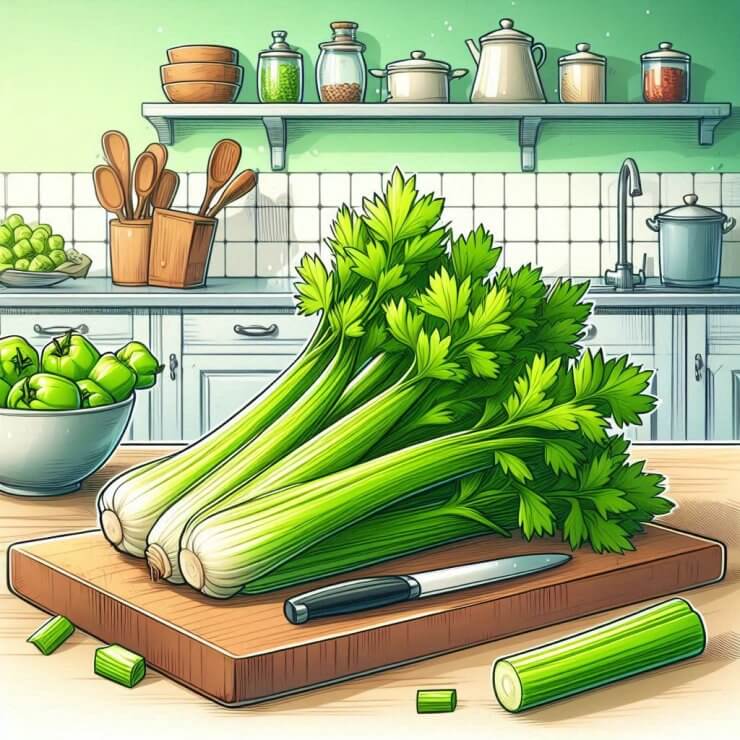Read by Michael Flamel

When it comes to appetizers, there’s one unsung hero that often gets overlooked in favor of its flashier, more decadent counterparts. I’m talking, of course, about celery. Yes, the humble stalk that is so often relegated to the role of a garnish or, at best, a delivery vehicle for dips and spreads. But what if I told you that celery is perhaps one of the best foundations for a variety of appetizers? Whether you’re stuffing it with soft cheeses, pâté, or one of my personal favorites, peanut butter, (Click here to discover a cranberry powered twist on this classic snack) celery is a versatile and surprisingly sophisticated addition to any table.
From the Winter holidays to Easter brunches, Summer cookouts, and everything in between, my professional chef father was always pushing the limits of what he could do with celery. He’d stuff it with anything he could get his hands on, from the aforementioned soft cheeses to smoked salmon mousse, deviled egg filling, and even a spicy crab salad. The results were always a hit, leaving guests to wonder how something so simple could be so delicious.
But celery’s talents don’t end at being an appetizer superstar. It’s also an amazing ingredient that can bring crunch and flavor to your tuna or chicken salad, and it’s a must-have in a great beef stew. That satisfying snap when you bite into a crisp piece of celery is something that no other vegetable can quite replicate.
A Brief Guide to Celery Varieties and Growing Tips
Celery isn’t just the pale green stalks you see in your local grocery store. There are several varieties of celery, each with its own unique flavor and characteristics. There’s the classic Pascal celery, known for its long, tender stalks that are perfect for snacking and stuffing. Then there’s Golden celery, which has a more delicate flavor and a beautiful yellow hue. For those who like a bit more intensity, there’s Chinese celery, which has thinner, darker stalks and a stronger flavor—perfect for cooking.
Growing celery in your own backyard is a rewarding experience, but it does require a bit of patience and care. Celery prefers cooler weather, so planting in early Spring or late Summer is ideal. It thrives in rich, well-drained soil with plenty of organic matter. Celery plants are thirsty, so keep them well watered, but be careful not to waterlog the soil. They also benefit from regular feeding with a balanced fertilizer. For more detailed guidance on growing your own celery, check out our complete guide to celery cultivation. (Click here to read the full guide.)
A Celery Stalk Through History
Did you know that celery has been cultivated for thousands of years? Originating in the Mediterranean basin, celery was initially grown as a medicinal plant, prized for its anti-inflammatory properties. Ancient Greeks and Romans used celery in everything from soups to stews, and it was even woven into wreaths to crown the victors of athletic games. As it spread across the world, different cultures adapted celery to their local cuisines, adding it to everything from Chinese stir-fries to French mirepoix (a flavor base made from finely diced vegetables, including celery) and, of course, our beloved casseroles.
Fun Facts About Celery
- Celery is about 95 percent water, making it a low-calorie snack that’s surprisingly filling.
- The ancient Greeks considered celery to be an aphrodisiac. Who knew?
- In 2011, the world record for the longest celery stalk was set at an impressive 12 feet and 1.75 inches!
- Celery is grown commercially in many parts of the world, but California is the top producer in the United States.
Whether you’re a home gardener or just a fan of crunchy snacks, celery is a versatile and delicious vegetable that deserves a place in your kitchen and garden, learn more in our celery guide. We’d love to hear about how you use celery and the varieties you prefer. Do you have a favorite stuffed celery recipe or a growing tip to share? Let us know in the comments! ❖


 Previous
Previous

